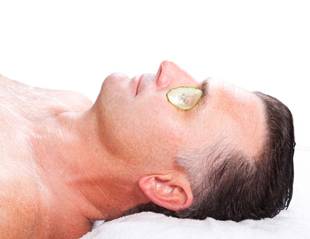How do I get to sleep?
Sleep itself is straightforward; the difficult part, sometimes, is getting into that state. Many things tell us that it’s time to sleep.
Obviously, the longer we stay awake, the sleepier we become: this is called homeostatic regulation. Usually, we are awake for 16 hours or so before we get sleepy.
Another regulator of sleep is our body clock (circadian rhythm), which links sleep with other bodily cycles, such as temperature, growth and levels of various brain chemicals, including serotonin, cortisol and melatonin.
These two basic instincts can be used to our advantage when we are trying to send ourselves to sleep. Getting strong homeostatic sleepiness means going to sleep no earlier than 15 to 19 hours after waking up. Optimizing circadian sleepiness means going to sleep when we start to feel drowsy in the evening – neither earlier nor later.
Our clock is usually timed so that we fall asleep around 11pm and wake up at 7am. Some of us (often referred to as ‘night-owls’) have later-timed body clocks and may not be ready to fall asleep until around 2am, preferring to sleep until 10am. Others (the ‘larks’) have early-timed body clocks and can fall asleep quickly in the evening – often by 9pm – but then wake early.
How do I wake up?
Unless we use alarm clocks, the timing of our waking is determined primarily by circadian rhythms, so even if ‘larks’ are sleep-deprived, they are unlikely to sleep in. These different timed body clocks do not pose a problem. However, sleeping ‘out of sync’ with our body clocks, even if we have been awake for a long time and feel sleepy, is relatively inefficient. Trying to fall asleep too early, in relation to our natural rhythms, is simply ineffective.
An example of how this works is seen when daylight and darkness patterns fail to gel with our body rhythms. This is generally experienced as jet-lag, but is also seen in shift workers and following even small changes in our circadian rhythm, such as at the beginning or end of daylight savings periods. This mistiming can make it difficult for us to fall asleep or wake at the right time for a number of days.
How to re-set your body clock
The good news is that we can usually reset (entrain) our body clocks each day by means of cues such as light, noise and activity. For example, a dark, quiet room helps to promote sleep. Taking a hot bath, shower or sauna in the late evening sometimes helps us to fall asleep, as our temperatures tend to drop post-bathing, so our bodies think it must be ‘sleep time’.
By contrast, exposure to bright fluorescent light in bathrooms, or emanating from computer screens or televisions, will prevent sleep. Another way to synchronize our body clocks is to expose our bodies to bright light, which is usually obtainable for free, without a prescription. For those troubled with early-morning waking, exposing ourselves to bright natural light in the evening can delay our body clock by a few hours. Equally, delay in getting to sleep can sometimes be helped by getting some bright morning light to bring the clock forward.
For those who need to reset mistiming body clocks, melatonin is available on prescription. This is designed as short-term therapy and most preparations contain large amounts of melatonin (1-3mg), usually several times more than are our bodies’ normal circadian rhythms in order to clonk us back into cycle. The melatonin available over the counter in many pharmacies contains little active ingredient and is usually ineffective at correcting insomnia (although it may have antioxidant benefits).
Last Reviewed 27/Feb/2014
Dr Merlin Thomas
Latest posts by Dr Merlin Thomas (see all)
- How to increase DHEA levels - 28/09/17
- Testosterone supplement benefits & risks - 11/07/17
- Health effects of tea & coffee - 10/07/17
